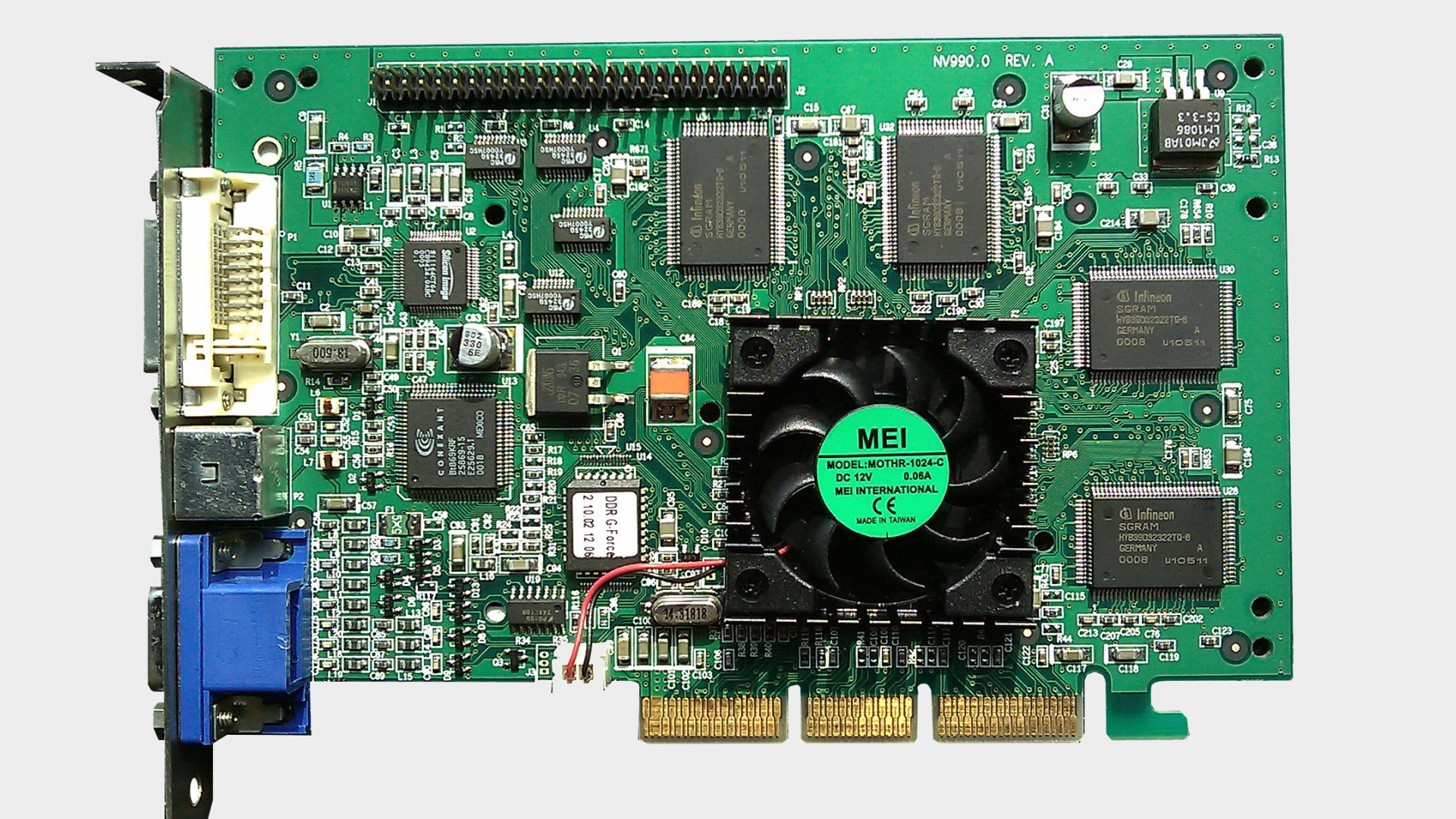
In our minds, forever young.
When does a GPU experience a birthday, exactly? I would argue on the anniversary of its release date, which means that the GeForce 256 is 25 years young on this very day. It might not look like much compared to modern GPUs, but this little card stands as a piece of gaming history worth celebrating.
The original SDR version of this mighty piece of PC gaming hardware was released on October 11, 1999, and certified its place in history (and our hearts) as the first proper GPU, mainly because, err, Nvidia marketed it as one. In reality, Sony is believed to be the first to use the term in reference to the 32-bit GPU in the PS1, but hey, let’s not let that spoil the story, shall we?
Still, with a gigantic 32 MB of memory and a lightning-fast 120 MHz core clock speed, this little beastie kicked off the GPU revolution with a bang, and the card sitting in your machine today owes it a great deal.
Thanks to onboard hardware transform and lighting (T&L), it was able to take that part of the rendering chain from the CPU onto its tiny shoulders, making the GF256 the first video card to accelerate every step of making a shiny new frame— and allowing developers to go wild with the polygon counts and ushering in a new generation of gaming for us all.
Of course, AGP “video cards” like the 3dfx Voodoo3 series were already a thing, so you could argue that GPUs already existed long before Nvidia coined the term. Still, that’s no fun, and the included features of the GeForce 256 really did seem like a giant leap for PC gaming.
The “256” in the name is in reference to the 256-bit QuadPipe Rendering Engine employed within, consisting of four 64-bit pixel pipelines on the NV10 chip running at 120 MHz, resulting in a 480 Mpix/sec fill rate. It also had TV-out capability, hardware alpha-blending, and was 1080i compliant.
Thanks to all this mind-boggling (for the time) tech, the little GeForce could be up to 50% faster than the Voodoo3 3500 or Nvidia RIVA TNT2 Ultra in hardware T&L-enabled games, and that made it rather desirable for its time.
And look at its weeny little cooler! I remember the days when new pieces of hardware came equipped with tiny, screaming fans. Good stuff it was, and we were grateful for it, too.
Ok, all joking aside, this thing was a genuinely big release for its time, and it was quickly followed by a DDR model (released on December 13, 1999) with similar specs, although obviously with glorious double data rate memory. I’ve listed the specs of both of them below, so we can all gaze in wonder upon their beauty:
What with all the current noise surrounding the upcoming Nvidia 50-series power requirements, it’s quite refreshing to see a 13/12 W TDP rating, isn’t it? And check out that transistor count. 17 million seemed massive back in the day, but a modern RTX 4090 has, err, over 76 billion. Still, that’s 25 years’ worth of progress there, so it’s nice to see how far we’ve come.
So what were we playing at the time? Well, 1999 was also the year that the very first Unreal Tournament launched, on 30 November, just in time to ride the GeForce wave. Just two days later, Quake III Arena was unleashed upon the world, making it a perfect time to get your multiplayer first-person shooter on with your shiny new Nvidia hardware.
Heady days indeed. I’m certain that if you rummage around in my parent’s attic, you’re likely to find one of these still knocking around in the back of a box, probably originally containing the GPU it was replaced with. Having spent the afternoon drenching myself in GPU nostalgia, I feel like now I should rescue it from its dusty tomb and mount it, perhaps in pride of place on the wall of my home.
I’ve just spoken to my partner, and we won’t be doing that. Shame. Anyways, if you do happen to have one knocking around, perhaps now is the day to show it some sunlight. A small cake, a candle, and a solemn ceremony are all it really needs. I salute you, GeForce 256. We truly didn’t know how good we had it.






